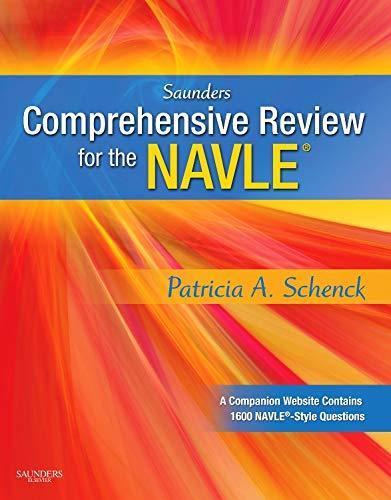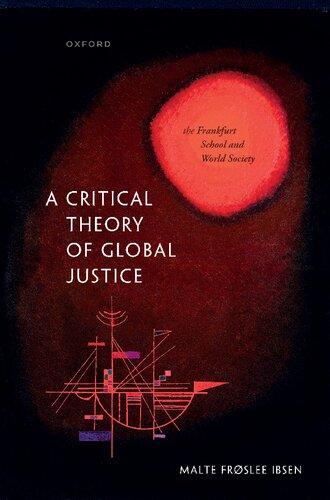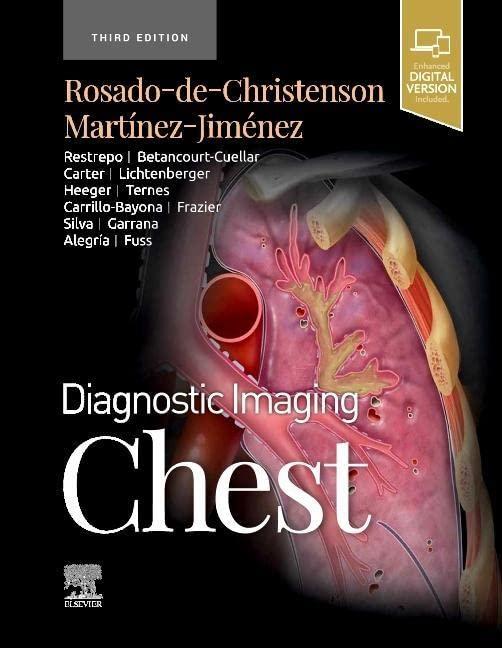AUDIOLOGY REVIEW
Preparing for the Praxis and Comprehensive Examinations
9177 Aero Drive, Suite B
San Diego, CA 92123
email: information@pluralpublishing.com
website: https://www.pluralpublishing.com
Copyright © 2024 by Plural Publishing, Inc.
Typeset in 12/14 Adobe Garamond by Flanagan’s Publishing Services, Inc.
Printed in the United States of America by Integrated Books International
All rights, including that of translation, reserved. No part of this publication may be reproduced, stored in a retrieval system, or transmitted in any form or by any means, electronic, mechanical, recording, or otherwise, including photocopying, recording, taping, web distribution, or information storage and retrieval systems without the prior written consent of the publisher.
For permission to use material from this text, contact us by
Telephone: (866) 758-7251
Fax: (888) 758-7255
email: permissions@pluralpublishing.com
Every attempt has been made to contact the copyright holders for material originally printed in another source. If any have been inadvertently overlooked, the publisher will gladly make the necessary arrangements at the first opportunity.
Audiology review: preparing for the praxis and comprehensive examinations
Library of Congress Cataloging-in-Publication Control Number: 2023042392
ISBN-13: 978-1-63550-552-8
ISBN-10: 1-63550-552-6
Section III. Assessment and Differential Diagnosis
Audiology Review: Preparing for the Praxis and Comprehensive Examinations
We thank our former professors for challenging and inspiring us to strive for excellence in our respective careers. We would also like to thank all of the contributors, reviewers, and students who assisted in the development of the text. Specifically, Texas Tech University Health Sciences Center AuD student Ashley Reynard played a significant role in the development and editing of various components of the text.
Audiology Review: Preparing for the Praxis and Comprehensive Examinations
Leigh Ann Reel, AuD, PhD, CCC-A
Associate Professor
Department of Speech, Language, and Hearing Sciences
Texas Tech University Health Sciences Center
Lubbock, Texas
Angela Van Sickle, PhD, CCC-SLP
Assistant Professor
Department of Speech, Language, and Hearing Sciences
Texas Tech University Health Sciences Center
Lubbock, Texas
Emily Jo Venskytis, AuD, ABAC, CCC-A
Director of Clinical Education
Assistant Professor
MGH Institute of Health Professions Boston, Massachusetts
C. Renee Zimmerman, AuD, CCC-A
Assistant Professor and Audiology Clinical Coordinator
Department of Speech, Language, and Hearing Sciences
Texas Tech University Health Sciences Center
Lubbock, Texas
Audiology Review: Preparing for the Praxis and Comprehensive Examinations
Plural Publishing and the editors would like to thank the following reviewers for taking the time to provide their valuable feedback during the manuscript development process. Additional anonymous feedback was provided by other expert reviewers.
Tricia Dabrowski, AuD Director of Clinical Education
Associate Professor A.T. Still University Mesa, Arizona
Richard W. Danielson, PhD, CPS-A, Colonel (U.S. Army) Retired Houston, Texas
Diana C. Emanuel, PhD, CCC-A Professor Towson University Towson, Maryland
Karah Gottschalk, AuD, PhD Research Audiologist
James H. Quillen VA Medical Center Mountain Home, Tennessee
Julie Hazelbaker, PhD Clinical Assistant Professor The Ohio State University Columbus, Ohio
Kristen Janky, AuD, PhD Director: Balance and Vestibular Research Lab Boys Town National Research Hospital Omaha, Nebraska
Kenneth Morse, AuD, PhD Assistant Professor
West Virginia University Morgantown, West Virginia
Leigh Ann Reel, AuD, PhD Associate Professor
Texas Tech University Health Sciences Center Lubbock, Texas
Sherry Sancibrian, MS, CCC-SLP, BCS-CL ASHA Fellow
Grover E. Murray Professor Program Director Speech-Language Pathology
Texas Tech University Health Sciences Center Lubbock, Texas
Gail M. Whitelaw, PhD, MHA Clinical Associate Professor Clinic Director
The Ohio State University Columbus, Ohio
the Audiology Praxis. Demonstrative Praxis-type questions with explanations will be presented, as well as additional questions for practicing the strategies.
For the sample questions above, the first question, known as verbatim recall, is typical of classroom exams wherein you need only recall the answer. Naturally, if you recognize the answer, nothing further is required. For the first question, you should immediately recognize the correct answer as (B). In acoustic reflex decay testing, a signal is presented for 10 seconds, and abnormal decay is observed when the amplitude decreases more than half of the initial amplitude.
By contrast, the second question, which is typical of the Praxis, requires you to be actively engaged in specific cognitive processes and to use professional judgment in selecting the correct answer. For the second question, utilizing your inherent mental processes, you should reason that since hearing in the low frequencies is normal, it is important that the hearing aid provide less amplification for low frequencies than for high frequencies and account for the occlusion effect. A BTE hearing aid with an open dome is the best means for amplifying the high-frequency region and minimizing occlusion by allowing a maximum amount of low-frequency information to escape the ear canal with the open dome. Therefore, (B) is the correct answer.
Known as reasoning skills, several cognitive processes required for Praxis-type questions will be discussed in this chapter. The cognitive processes and logic are demonstrated in the explanations to the correct answers. It is important to know that reasoning skills are not a general approach to taking the Praxis, but conscious processes to be executed for tackling questions that you must methodically think through or make an intelligent guess.
None of the processes are new skills to be learned, nor do they require you to memorize them. Rather, they are inherent and easy operations to be mindful of and apply when you encounter tough questions. As you will see, the reasoning skills are often tied to a typical question format, but not exclusively. Indeed, you can elect to use any reasoning skill with any type of question if it assists in selecting the answer. While reasoning skills are required for most questions on the Praxis, some are useful for understanding the question, while others are to be applied when selecting the intended answer. In fact, you will find that you often use reasoning skills for both the question and the answer.
Understanding the Question
Focusing
Focusing requires conscious awareness of what the question is really asking, that is, what the specific points of information in the question stem imply and what information is relevant to the answer. The question stem may appear as a wordy, narrative clinical scenario from which you must extrapolate the facts and intuit their relevant implication. The major demand of focusing is the ability to summarize wordy questions into concise statements. As a demonstration, note the two versions of the next question.
Version 1
In an investigation of infants’ ability to discriminate auditory stimuli, the investigator presents puretone signals at various frequencies and dB levels to 30 infants between the ages of 3 and 6 months and observes changes in the rate of their sucking reflex response. The investigator observes an increased rate of sucking correlated with increments of increases in dB level but not frequency. For this investigation, the sucking response is the. . . .
Ethics and Values
For the Praxis, examinees are frequently required to make ethical clinical decisions based upon professional values and appropriate clinical procedures. These may be reflected in both the question and the answer options. Typical values questions include law abidance, fairness and equity, protecting patient rights, professional decorum, referrals/cooperation with other professionals, objectivity, and the scientific method. It is extremely important to read the ASHA Code of Ethics. Such ethics questions are quite easy, but the points in the Code of Ethics are sufficiently specific that it can be difficult to select the answer without having read the document. The following is an example of a question that reflects ethics and professional values.
An audiologist completes an evaluation due to a complaint of recent hearing loss in one ear. Results of the evaluation reveal a moderate-to-severe, flat sensorineural hearing loss in the right ear and normal hearing in the left ear. The word recognition scores for recorded, full-list NU-6 in quiet at 40 dB SL is 24% in the right ear and 100% in the left ear. Which of the following is the audiologist’s appropriate next step?
A. Recommend a Contralateral Routing of Signal (CROS) amplification system
B. Refer the patient for a comprehensive auditory processing disorder (APE) evaluation
C. Refer the patient to a physician
D. Refer the patient for magnetic resonance imaging (MRI)
According to the ethical and professional values of the profession, any recent onset of hearing loss and significant, unexplained, asymmetry between right and left ear requires medical evaluation. Thus, the patient should be referred to a physician for diagnosis, so (C) is correct.
Another type of ethics and values question requires the examinee to recognize and assume the mind-set of the question writer. In the classroom, students adapt to the instructor’s style and what the instructor deems as important. Either consciously or subconsciously, students learn to predict what will be on an exam. However, for the Praxis, one should not assume that the emphasis or camp of thought presented in his or her training applies universally or that the same textbooks are used overall. Thus, predicting the examiner is a useful skill that involves selecting the universal or most socially acceptable response. This is supremely important for professionals who have been away from academic study for a prolonged time and may have developed a personal slant, approach, or belief. It is necessary to recognize these and set them aside for the Praxis and select the textbook answer or the most highly professional option.
Negative Stem Questions
Best practices for test question writing recommend against negative stem questions, but they are nevertheless used quite often. Negative stem questions often contain the words not, least, or except or negative prefixes in the terminology. These questions sometimes pose a problem because they require a temporary cognitive shift that demands keen concentration. The best strategy for negative stem questions is known as the true/false strategy, which will be detailed further in a subsequent section. For the true/false strategy, as you read each option, physically (or mentally if the test is online) mark options that are true with T and those that are false with F. This will provide an immediate visual indication of the correct answer. Then select the option that is consistent with the question stem as it is stated.
the information presented in the question. As an example, the next question requires comparing the answer options.
A 40-year-old female experienced trauma to the head during a motor vehicle accident approximately 2 months ago. She was hospitalized for a week after suffering a concussion and lacerations to her head and scalp. Upon discharge from the hospital, she is reporting brief (15–20 second) episodes of vertigo when going from a sitting to a supine position and when rolling over in bed. The case history should lead the audiologist to suspect which of the following?
A. Central vestibular dysfunction
B. Temporal bone fracture
C. Benign paroxysmal positional vertigo (BPPV)
D. Ossicular disarticulation
This question demonstrates how focusing on the question stem, together with comparing and critiquing the answer options, can lead to the correct answer. The main concerns of the question are the brief symptoms of vertigo when moving from sitting to a supine position and/or rolling over in bed. Together with this information, the examinee must then compare each option for its relevance to the question and assess its potential contribution to the symptoms. Option (C) is correct because head trauma can lead to BBPV.
Classifying
Questions that require classification are typically theoretical and abstract. The question stem may be brief and contain little or no information, while it is the answer options that are wordy and contain the necessary facts. Classification involves discriminating the subtle differences among the options, distinguishing their quality and quantity aspects, and prioritizing and placing them in hierarchical relationships. The question might require selecting the worst answer or the one that is not consistent with the others. The question stem often contains key words best, least, primary, preferred, major, or main. Several answer options may be plausible, but there is one single best answer. The following question demonstrates classifying.
A typically developing middle-school age child who is performing at grade level is referred for further evaluation after failing a school hearing screening. Although she reports no difficulties with her hearing, the audiologist finds hearing loss after a complete audiological workup. Which of the following hearing losses is most likely to go unnoticed?
A. Bilateral moderate sloping to severe sensorineural hearing loss
B. Precipitously sloping to moderately severe sensorineural hearing loss
C. Bilateral moderate conductive hearing loss
D. Bilateral mild to severe mixed hearing loss
After classifying the options to select the condition most likely to be unperceived, (B) is correct. A sharply sloping bilateral sensorineural hearing loss most likely affects only high frequencies, and children with this type of hearing loss may be able to function relatively normally in most situations. Thus, the hearing loss could be unperceived.











